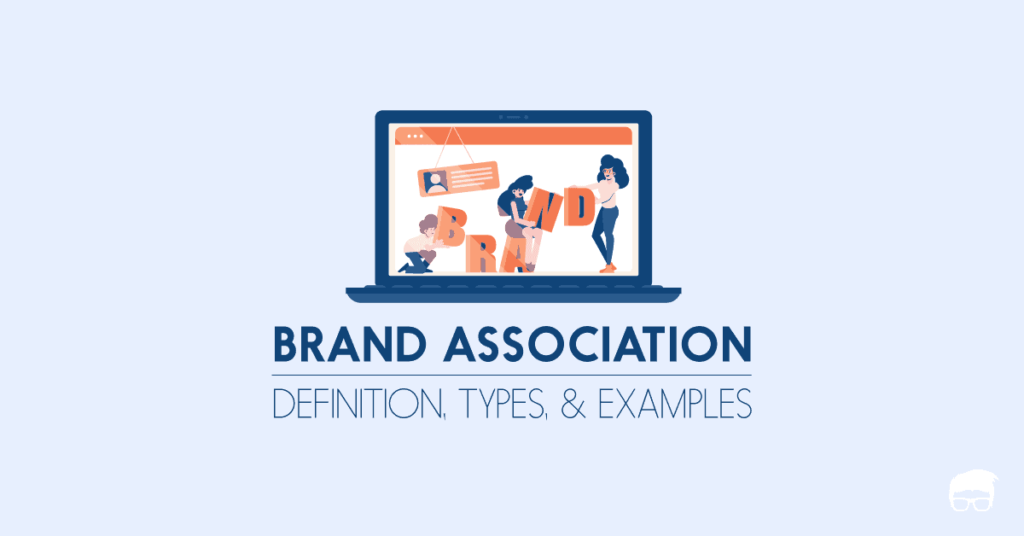Umpteen number of brands are present in a customer’s vicinity. While the customer fails to recognise a few, he surely has a strong mental connection to a number of brands. As soon as a customer comes across a brand he recognises, he begins to mentally associate it with some image in his mind.
This kind of connection between a consumer and a brand works like a powerhouse in creating a successful brand image.
But what exactly is brand association, what are its types and why is it important? Let’s find out.
Brand association Definition
Brand association is the co-relation of a brand with a certain concept that a consumer recalls when he comes across that brand.
The consumer recalls a brand by using the unique set of attributes, experiences, images, etc. that make the brand stand out. This unique set can include a concept, emotion, object, experience, personality, relation, human, thing, or image. It can be tangible or intangible. It can be directly related, indirectly related, or totally unrelated to brand’s offerings. But it is something that makes the customer remember and recognise the brand.
The primary motive behind the brand association is to have a brand which the consumers can link with positive attributes. The brand association helps in building value and earning recognition. It’s a way for brands to make consumers aware of its quality.
Importance of Brand Association
In the eyes of a customer, a brand association is a kind of a mental linkage. Hence, brand associations have the power to drive purchasing decisions. Not just that, brand associations can influence product differentiation and user satisfaction.
That being said, brand associations are a vital part of building a brand identity. It’s important because it:
- Helps customers recall a brand for the unique qualities it offers.
- Differentiates the brand from its competitors.
- Ensures customers of the quality it offers.
- Create a positive image of the brand/product.
- Be of great help while trying to launch a new product under the same brand.
Brand Association Types
The right combination of images, words, graphics and marketing material can help in building brand association. Some of the most common categories of the brand association are:
Attribution Based Brand Association
The attribute-based brand association comprises the physical elements or the external aspects of the product. Pricing, packaging, quality, and appearance mostly fall under this category.
These attributes help the target market in recalling the brand’s features and characteristics. This gives the brand a headstart in the industry, as well as in the specific market niche.
Interest-Based Brand Association
Many companies use interest-based association factor to lure customers. These basic Interests of the consumers help the brand in piquing their intellect and consciousness.
First, the company generates interest in the minds of the customer. Gradually, it positions the brand as a way to cater to the consumers’ interest.
Attitude Based Brand Association
Customers determine brand association after evaluating the brand. This association could be quite abstract, as well as can be linked to a specific lifestyle.
As an instance, when a consumer hears about Nike, he would immediately associate it with fitness.
Celebrity Based Brand Association
When brands hire celebrities to endorse their product, consumers begin to associate those celebrities with the brand. If Elon Musk comes in your mind when you hear about Tesla, that’s the celebrity-based brand association for you.
Bringing in a celebrity to endorse a brand leaves an effective imprint in the consumers’ mind.
Brand association examples
While defining brand association is a bit hard, the concept might become more clear with certain examples.
Brand Association of Nike
When it comes to Nike, customers usually associate it with:
- Swoosh
- Sports
- Sneakers
- Sweat
- Energy
- Motivation
- Just Do It
- Jordan
- Check
- Athelete
- Sportsperson
- Performance
- Premium sports brand
Brand Association of Apple
When it comes to Apple, customers associate it with:
- ‘i’
- iPhone
- iPad
- Macbook
- Electronics
- Premiumness
- Luxury
- Overpriced
- Goals
- Expensive
- Loyalty
- Grey
- Steve Jobs
- Tim Cook
How Are Brand Associations Developed?
Brand associations develop with every interaction of the brand with the customer. It results from marketing efforts, pricing efforts, brand loyalty, referrals, and every instance that involves the brand, like –
- Customers relation with the organization,
- Marketing – advertising, public relations, etc,
- Publicity,
- Price structure,
- Celebrity/influencer association,
- Product’s category,
- Product Quality,
- Competitors’ strategies, etc.
Positive brand associations develop when the offering or the brand fulfils its promise and stands out of the crowd in the eyes of the customers. Negative brand associations develop when the brand efforts fall short of customer expectations.
Go On, Tell Us What You Think!
Did we miss something? Come on! Tell us what you think about our article in the comments section.
A startup consultant, digital marketer, traveller, and philomath. Aashish has worked with over 20 startups and successfully helped them ideate, raise money, and succeed. When not working, he can be found hiking, camping, and stargazing.








![What Is Brand Strategy & How To Develop One? [Ultimate Guide] BRAND STRATEGY](webp/brand-strategy.webp)